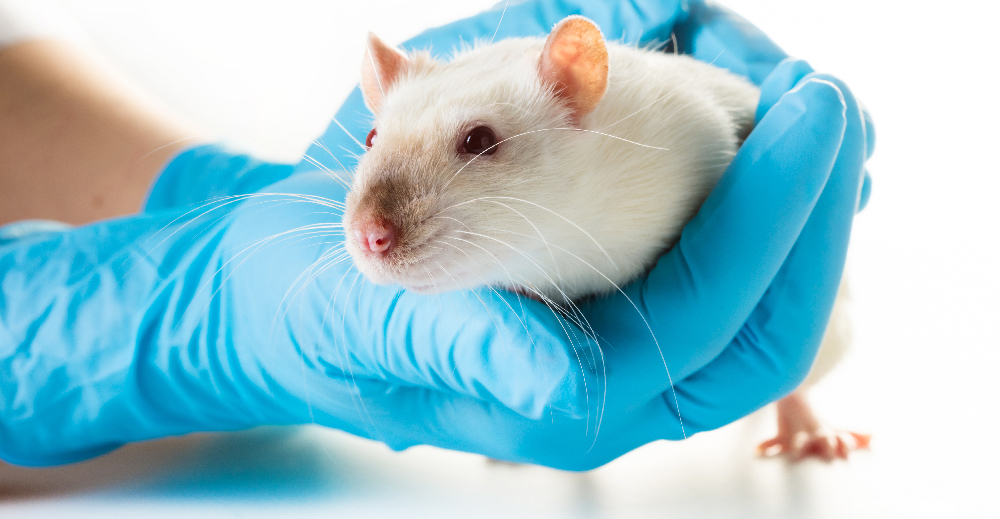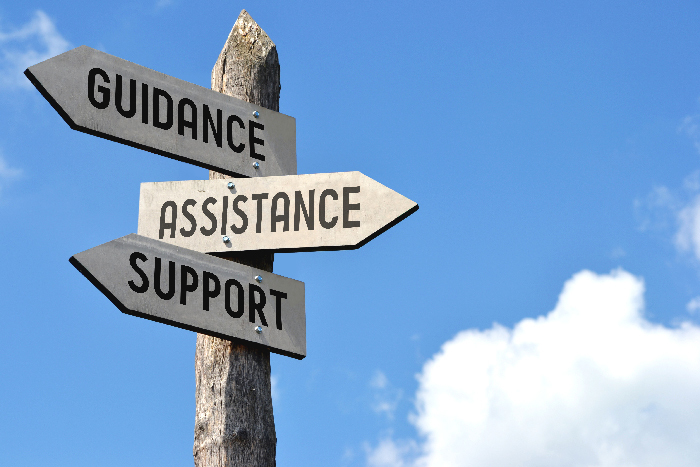
Using AAALAC Program Description Sections in the OLAW Domestic Assurance
One of the actions identified in the report Reducing Administrative Burden for Researchers: Animal Care and Use in Research in response to the 21st Century Cures Act is to encourage AAALAC-accredited institutions to use sections of the AAALAC International (AAALAC) Program Description (PD) in applicable parts of the OLAW Animal Welfare Assurance (Assurance).
To reduce administrative burden, institutions have the option to use sections of the AAALAC PD when preparing a Domestic Animal Welfare Assurance. Institutions must ensure that all information requested in the Assurance document is provided, including information that is not requested in the AAALAC PD but is required by OLAW.
On this page:
Policies and Laws

PHS Policy III.D. “Animal Welfare Assurance or Assurance - The documentation from an institution assuring institutional compliance with this Policy.”
PHS Policy IV.A. “No activity involving animals may be conducted or supported by the PHS until the institution conducting the activity has provided a written Assurance acceptable to the PHS, setting forth compliance with this Policy...OLAW will provide the institution with necessary instructions and an example of an acceptable Assurance. All Assurances submitted to the PHS in accordance with this Policy will be evaluated by OLAW to determine the adequacy of the institution's proposed program for the care and use of animals in PHS-conducted or supported activities…Without an applicable PHS-approved Assurance, no PHS-conducted or supported activity involving animals at the institution will be permitted to continue.”
PHS Policy IV.A.1. “The Assurance shall fully describe the institution's program for the care and use of animals in PHS-conducted or supported activities.”
Health Research Extension Act Sec. 495.(b)(1).“Guidelines of the Secretary under subsection (a)(3) shall require animal care committees at each entity which conducts biomedical and behavioral research with funds provided under this Act (including the National Institutes of Health and the national research institutes) to assure compliance with the guidelines established under subsection (a).”

Guidance
| Notice Number | Description | Date |
|---|---|---|
| NOT-OD-21-130 | Notice to Encourage Using AAALAC International Program Description Sections to Complete Parts of the OLAW Domestic Animal Welfare Assurance | June 4, 2021 |
Implementation
Institutions have the option to incorporate the following AAALAC PD sections into their Assurance:
For the Assurance Part III.D.9. Describe how the IACUC monitors ongoing activities (post-approval monitoring).
AAALAC PD Section 2.I.B.2. Post-Approval Monitoring:
a. Describe mechanisms for the Institutional Animal Care and Use Committee (IACUC) review of ongoing studies and periodic proposal/protocol reviews (PD pg. 18).
e. Describe any other monitoring mechanisms or procedures used to facilitate ongoing protocol assessment and compliance, if applicable (PD pg. 19).
For the Assurance Part III.E. The risk-based occupational health and safety program for personnel working in laboratory animal facilities and personnel who have frequent contact with animals is as follows: [Describe the Institution’s occupational health and safety program for personnel involved in the care and use of animals.]
AAALAC PD Section 2.I.A.2.b. Occupational Health and Safety of Personnel:
i.1) List the institutional entities that are involved in the planning, oversight, and operation of the institutional occupational health and safety program related to animal care and use (PD pg. 6).
ii.1) a) Describe who receives personal medical evaluation as a component of individual risk assessment (PD pg. 8).
ii.1) d) Describe safety considerations for individuals with incidental exposure to animal care and use (e.g., contractors; PD pg. 8).
ii.1) e) Describe general features of the medical evaluation and preventive medicine programs within the context of work duties including: pre-employment/pre-assignment health evaluation, medical evaluations, diagnostic tests (e.g., for tuberculosis), precautions for working with potentially hazardous species, and immunization programs (PD pg. 8).
ii.2) Describe general educational program(s) to inform personnel about: allergies, zoonoses, personal hygiene, physical injuries in animal facilities, or species used (e.g., nonhuman primates). Include in the description a summary of the topics covered, including entities responsible for providing the training (PD pg. 9).
ii.3) a) List routine personal protective equipment and work clothing provided and/or required for animal care personnel, research, and technical staff (PD pg. 9).
ii.3) c) Describe provisions and expected practices for washing hands, showering, and changing clothes (PD pg. 9).
ii.3) d) Describe policies regarding eating, drinking, and smoking in animal facilities (PD pg. 10).
For the Assurance Part III.G. The training or instruction available to scientists, animal technicians, and other personnel involved in animal care, treatment, or use.
AAALAC PD Section 2.I.A.2.a. Training, Education, and Continuing Educational Opportunities:
i. For the Attending Veterinarian and other individuals having a direct role in providing veterinary medical care, provide training and continuing education opportunities (PD pg. 5).
ii. 2) For Animal Care Personnel, summarize training and continuing education opportunities provided (PD pg. 5). [There is no requirement to include animal care personnel certification levels, type, and experience in the Assurance document.]
iii.1) a) For the Research Team, briefly describe the content of any required training (PD pg. 6).
iii.1) c) For the Research Team, describe continuing education opportunities offered (PD pg. 6).
AAALAC PD, Section 2.I.B.1. The Role of the IACUC:
a. iii. Describe the orientation, training, and continuing education opportunities for IACUC members (PD pg. 14).
Resources
FAQs
FAQ C.4 Are all documents submitted to OLAW subject to the Freedom of Information Act?
The Freedom of Information Act (FOIA), 5 U.S.C.522, provides individuals with a right of access to records in the possession of the federal government. All documents submitted to OLAW are subject to the FOIA. However, the government may withhold information pursuant to the exemptions and exclusions contained in FOIA. To learn more about the NIH FOIA process, see the OLAW Online Seminar: Openness and Transparency and Biomedical Research Oversight.
In a ruling by the US District Court for the District of Columbia Div. No 99-3024, In Defense of Animals v. Department of Health and Human Services (HHS), 9/28/2001, the Court ruled that HHS (NIH’s parent organization) may withhold IACUC members’ names. NIH does release the names of the IACUC Chairperson, veterinarian, and Institutional Official as reported in Assurances.
Note also that footnote 6 in the PHS Policy allows institutions to represent the name of IACUC members other than the chair and veterinarian by using numbers or other symbols, provided there is sufficient information to allow OLAW to determine that appointees are appropriately qualified. Identities of members must be readily ascertainable by the institution and available to OLAW upon request.
In providing the facility and species inventory as part of the Assurance submitted to OLAW, institutions may identify animal areas in any manner, e.g., initials, ID number. It is not necessary to provide OLAW with detailed diagrams of facilities or room numbers, unless specifically requested by OLAW.
Institutions are also advised to consult the Guidance on Prompt Reporting to OLAW under the PHS Policy (NIH Guide for Grants and Contracts NOT-OD-05-034) with respect to what information is expected to be reported when reporting noncompliance. Disciplinary documents (e.g., letters of reprimand) and correspondence between the IACUC and investigators are generally not required by OLAW, although they may be requested.
Additional information about the FOIA, including guidelines for submitting FOIA requests, is available at: https://www.nih.gov/institutes-nih/nih-office-director/office-communications-public-liaison/freedom-information-act-office
FAQ G.1 What kind of training is necessary to comply with PHS Policy, and how frequently should it be provided?
The U.S. Government Principles1, Health Research Extension Act of 19852 and the PHS Policy3 repeatedly state that personnel must be appropriately trained, qualified, and experienced, and that proper instruction and training must be provided. Training should be documented. Institutions are responsible for providing appropriate resources to support personnel training (Guide, pg.15). As the size and nature of institutional research programs vary significantly, there is corresponding variation in the scope and depth of instructional programs and the frequency at which they are offered.
As part of their review of animal activities, IACUCs are responsible for verifying that individuals listed in animal activities will be appropriately qualified and trained prior to engaging in animal activities (see PHS Policy IV.C.1e.-f., and 9CFR 1, chapter 1, Part 2, 2.31). This may be accomplished by staff, such as IACUC administrators, using an administrative review mechanism to determine if personnel meet all institutional training requirements.
While training is an institutional responsibility, IACUCs are required to evaluate the effectiveness of the institutional training program as it relates to the care and use of animals as part of the semiannual program review.
Discussion of appropriate training is found throughout the Guide. At a minimum, the PHS Policy and the Guide (page 15) require institutions to:
- Ensure that individuals using or caring for animals are trained and qualified in the appropriate species-specific housing methods, husbandry procedures, and handling techniques;
- Ensure that researchers performing experimental manipulation, including anesthesia and surgery, are qualified through training or experience to accomplish the procedures humanely and in a scientifically acceptable fashion;
- Provide training or instruction in research and testing methods that minimize the number of animals required to obtain valid results and minimize animal distress;
- Ensure that professional staff whose work involves hazardous biological, chemical, or physical agents have training or experience to assess potential dangers, and select and oversee the implementation of appropriate safeguards; and
- Ensure compliance with any initial and continuing education regarding local, regional, and national requirements licensing veterinarians, veterinary technicians, and animal health technicians.
1 The U.S. Government Principles state that, “…housing, care, and feeding…must be directed by a veterinarian or other scientist trained and experienced in the proper care, handling, and use of the species being maintained or studied” (VII) and that, “Investigators and other personnel shall be appropriately qualified and experienced for conducting procedures on living animals. Adequate arrangements shall be made for their in-service training, including the proper and humane care and use of laboratory animals” (VIII).
2 The Health Research Extension Act of 1985 requires that, “scientists, animal technicians, and other personnel involved with animal care, treatment, and use…have available to them instruction or training in the humane practice of animal maintenance and experimentation…” (Sec. 495.(c) (1) (B)).
3 The PHS Policy requires that institutions seeking an Assurance provide “a synopsis of training or instruction in the humane practice of animal care and use, as well as training or instruction in research or testing methods that minimize the number of animals required to obtain valid results and minimize animal distress, offered to scientists, animal technicians, and other personnel involved in animal care, treatment or use” (IV.A.1.g.); that medical care for animals will be provided by “qualified” veterinarians (IV.C.1.e.) and that, “Personnel conducting procedures on the species being maintained or studied will be appropriately qualified and trained in those procedures” (IV.C.1.f.).
FAQ G.2 What is required for an occupational health and safety program?
The PHS Policy requires a “health program for personnel who work in laboratory animal facilities or have frequent contact with animals” (IV.A.1.f.). The Guide states that, “Each institution must establish and maintain an occupational health and safety program as an essential part of the overall Program of animal care and use…The nature of the OHSP will depend on the facility, research activities, hazards, and animal species involved.” (Guide pages 17-23)
“A comprehensive OHSP should include a hierarchy of control and prevention strategies that begins with the identification of hazards and the assessment of risk associated with those hazards.” (Guide page 18) An effective occupational health and safety program must encompass all personnel that have contact with animals. Depending on the species of animal or the amount of animal exposure, the program may not affect all personnel equally. Minimally, the program must include:
- pre-placement medical evaluation;
- identification of hazards to personnel and safeguards appropriate to the risks associated with the hazards;
- appropriate testing and vaccinations;
- training of personnel regarding their duties, any hazards, and necessary safeguards;
- policies and facilities that promote cleanliness;
- provisions for treating and documenting job-related injuries and illnesses;
- facilities, equipment, and procedures should be designed, selected, and developed to reduce the possibility of physical injury or health risk to personnel;
- good personal hygiene practices, prohibiting eating and drinking, use of tobacco products, and application of cosmetics and/or contact lenses in animal rooms and laboratories; and
- personal protective equipment (PPE).
Occupational Health and Safety in the Care and Use of Research Animals, published in 1997 by the National Research Council, includes helpful guidelines and references for establishing and maintaining an effective and comprehensive program.
FAQ G.6 Is post approval monitoring required?
Continuing IACUC oversight of animal activities is required and can be accomplished through a variety of mechanisms. (Guide pages 33-34) Monitoring animal care and use is required by the PHS Policy, but the Policy does not explicitly require specific post approval monitoring (PAM) procedures to compare the practices described in approved protocols and SOPs against the manner in which they are actually conducted. IACUCs are charged, however, with program oversight and as such are responsible for program evaluations, reviews of protocols, reporting noncompliance, ensuring that individuals who work with animals are appropriately trained and qualified, and addressing concerns involving the care and use of animals at the institution. The veterinarian with program authority and responsibility for animal activities along with the animal care and technical staff, add another important level of program supervision.
Related components of institutional programs provide monitoring by a multi-disciplinary team of individuals. Examples of such components include daily observation of animals by trained animal care personnel and communication to the veterinary staff for follow-up, facility monitoring by facility maintenance personnel, post operative care by trained personnel, evaluation of outcomes of animal procedures by investigators and staff, hands-on training in animal procedures, and appropriate reporting of incidents involving occupational health and safety. All of these functions and responsibilities imply a level of monitoring. Ultimately the institution has flexibility in how it achieves compliance.
Some institutions have developed PAM programs with dedicated staff that physically monitor procedures and practices associated with animal use protocols. This is one acceptable method that institutions may elect to adopt, but it is not a federally mandated requirement. Whatever methods an institution incorporates, it is important that the authority and responsibility of the IACUC not be contravened by a PAM program, institutional compliance officials, or other mechanism established to monitor animal care and use.
Webinars
| Webinar Link | Webinar Date |
|---|---|
| Writing a Good Assurance | June 9, 2011 |
Sample Documents and Landing Pages
| Title |
|---|
| Domestic Assurance |







